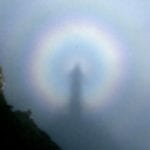 Weird Stuff
Weird Stuff  Weird Stuff
Weird Stuff  Mysteries
Mysteries 10 Tragic Disappearances and Deaths in Joshua Tree National Park
 History
History 10 Ways Childhood Really Sucked in the Old West
 Music
Music 10 Name Origins of Famous Bands from the 1990s
 Religion
Religion 10 Biggest Turnarounds by the Catholic Church
 Weird Stuff
Weird Stuff 10 Unbelievable Times Laws Had Unintended Consequences
 Humans
Humans Ten Historic Women Who Deserve Way More Credit Than They Got
 Movies and TV
Movies and TV 10 Films That Spawned Major Lawsuits
 History
History Ten Times Towns Were Wiped Off the Face of the Earth
 Creepy
Creepy 10 of the Most Disturbingly Haunted Public Houses in the UK
 Weird Stuff
Weird Stuff 10 Niche Subcultures That Are More Popular Than You Might Think
 Mysteries
Mysteries 10 Tragic Disappearances and Deaths in Joshua Tree National Park
 History
History 10 Ways Childhood Really Sucked in the Old West
Who's Behind Listverse?

Jamie Frater
Head Editor
Jamie founded Listverse due to an insatiable desire to share fascinating, obscure, and bizarre facts. He has been a guest speaker on numerous national radio and television stations and is a five time published author.
More About Us Music
Music 10 Name Origins of Famous Bands from the 1990s
 Religion
Religion 10 Biggest Turnarounds by the Catholic Church
 Weird Stuff
Weird Stuff 10 Unbelievable Times Laws Had Unintended Consequences
 Humans
Humans Ten Historic Women Who Deserve Way More Credit Than They Got
 Movies and TV
Movies and TV 10 Films That Spawned Major Lawsuits
 History
History Ten Times Towns Were Wiped Off the Face of the Earth
 Creepy
Creepy 10 of the Most Disturbingly Haunted Public Houses in the UK
10 Yeti Reports Involving More Than Footprints
In April 2019, a mountain expedition by the Indian Army discovered huge footprints in the snow high in the Himalayas. They tweeted out pictures, claiming the images as evidence for the legendary Yeti, a large, hairy biped believed to exist in the mountain range. Not surprisingly, most people were unimpressed.[1]
Apparent Yeti prints have been seen many times before, and there have been many explanations put forward to explain them away. If there actually are Yetis in the Himalayas, wouldn’t someone have seen them by now? Well, about that . . .
10 Where’s A Camera When You Need One?

In 1925, a photographer, N.A. Tombazi, was touring the Himalayas taking scenic photographs. One day, his porters called him to come from his tent, and they pointed to a dark object 183 to 274 meters (600–900 ft) away.
Tombazi could see the figure was like a human being and walking upright; it was also was dark in color and appeared to be wearing no clothes. This strange being was walking around from rhododendron bush to rhododendron bush, rummaging through them and occasionally uprooting one. After the figure was visible for about a minute, Tombazi lost view of it as it walked off into some thick scrub. Tombazi was flustered; he’d had no time to get a camera or binoculars.
Tombazi and some of the men trekked over to the area a few hours later to investigate and found plenty of footprints in the crisp snow. They were definitely man-like, but oddly small—they were only about 15 to 18 centimeters (6–7 in) long and about 10 centimeters (4 in) wide at the widest part. There were five toes, and the instep could be seen, but the heel was often indistinct or merely a point. The prints were between 45 and 60 centimeters (18–24 in) apart and were obviously from a bipedal creature. The scrub was too thick and the weather too threatening for Tombazi to try to follow the trail.
The porters all believed the creature had been a Yeti, but Tombazi didn’t want to believe that. However, he could not get past the fact the creature had looked very human in form.[2]
9 Hometown Expert
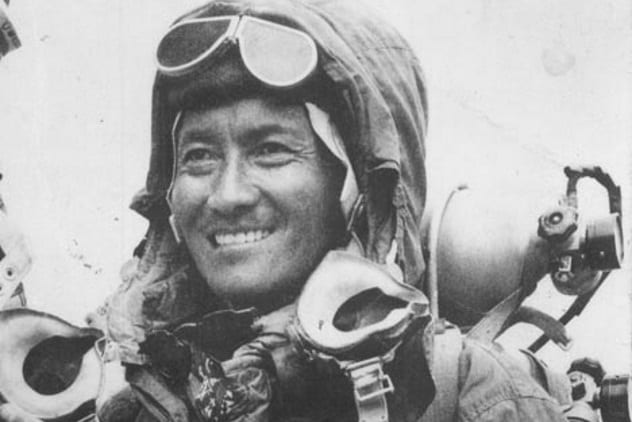
Tenzing Norgay was born and raised in the shadow of the Himalayas. He first became involved in mountaineering when he was picked by Englishman Eric Shipton to help in the 1935 reconnaissance of Mount Everest (an attempt to find usable path for climbing). Tenzing enjoyed the experience so much that he became involved with almost every other attempt to climb Everest afterward. On May 29, 1953, he reached the top of Everest with Edmund Hillary, making Tenzing and Hillary the first two people to do so.
In 1951, Tenzing was on a climb with Eric Shipton again when the whole party came across prints in the snow. Tenzing identified them as belonging to a Yeti, and then he explained to Shipton that he and some of the other Sherpas had seen a Yeti two years previously, near the village of Thyangboche. It was about 23 meters (75 ft) away when the group saw the strange creature. Tenzing said it stood about 168 centimeters tall (5’6″) and had a tall and pointed head. Its body was covered with reddish-brown hair, but the face looked hairless.
Shipton had another man cross-examine Tenzing in his native language, and Tenzing stood by his statement. He knew what a bear looked like, and he knew what a monkey looked like; this manlike creature had been neither.[3]
8 The Lure Of The Hunt
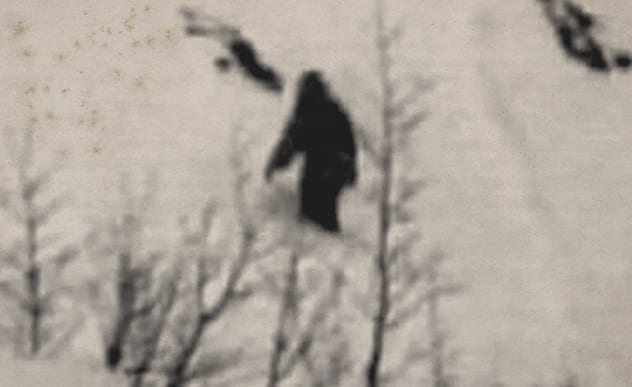
Around 12:00 AM one night in May 1951, Richard Steinwinkler reached a remote, high plateau in the Himalayas. He was climbing alone and had been planning to rest when he reached the plateau, but he saw from the corner of his eye a large figure moving behind an overhang. He immediately thought Yeti. He wasn’t a believer per se, but he knew that no one else should have been up there, especially at that time of night, so he immediately ran to the overhang to investigate.
Initially, there was nothing in sight. Then Steinwinkler noticed the footprint in the clay in front of him. He photographed the print and then followed the trail for hours, eventually finding the creature that made the print. The animal was about 50 meters (164 ft) away from him, and he could see it was moving on two legs and was very tall . . . but it was hard to get a good look because of the terrain. Steinwinkler, who had been running on excitement at a discovery up to this point, suddenly realized he was very, very alone with an unknown animal. Shakily, Steinwinkler took several photos. Then, ever so carefully, he crept back the way he came.[4]
7 Ouch!
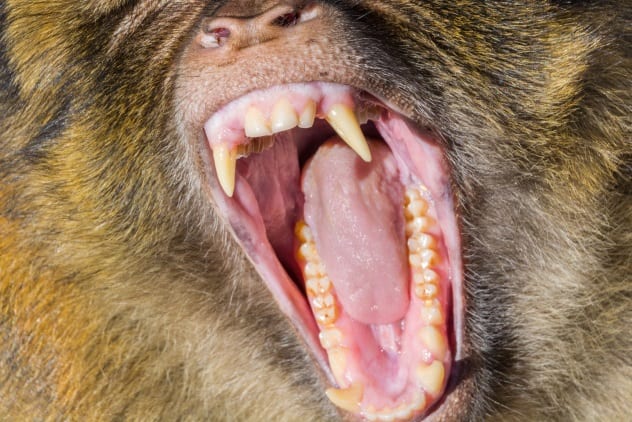
In 1952, Norwegians Aage Thorberg and Jan Frostis were doing survey work on the Zemu Glacier in the area of Kangchenjunga when they came across a fresh example of some of the famous footprints in the snow. Thorberg and Frostis, with two local men, went in search of the creatures that had made the tracks . . . and they found them.
The creatures looked like monkeys, with long tails, but were man-sized and walking upright. Frostis proposed shooting one to take with them, but Thorberg argued that the specimen would be more valuable alive. So they improvised a lasso to catch one with.
When the attempt was made, however, one of the creatures caught the lasso before it caught a creature, and another of the animals knocked Frostis to the ground and bit his shoulder. Thorberg hastily fired a shot into the air, and the creatures all fled as the men helped their wounded companion back to camp.[5]
6 A Bad Position

In 1953, Drs. George Moore and George K. Brooks were returning home after a visit to the Tibetan border area, where they had helped to control an outbreak of typhus. They were slowly following the trails back down the mountains to Kathmandu with a group of Sherpas when a storm threatened to overtake them. They had entered a muddy, forested area, and Moore and Brooks, unencumbered by packs and in a hurry to get home, had outpaced the Sherpas. A thick fog had set in, but the men could still follow the trail.
The two men stopped for a break near a large rock so that Brooks could grab a leech that was about to climb into his boot. Something moved ever so slightly in the bushes nearby; then it moved again. Both men quickly drew their pistols and backed up to a large boulder as they watched the bush. Then came two screams, one from somewhere in front of them and one from somewhere to the right!
Fearing they might be surrounded, the men climbed onto the boulder as an angry chattering came from the bushes in front of them, and more screams came from all around them. And then a creature, covered in hair but standing, pushed through the bushes in front of them. The creature stood about 152 centimeters tall (5′) and had gray skin, black hair, a mouth “that seemed to extend from ear to ear,” and long, yellow teeth and yellow eyes. As six or seven more figures started to be visible in the fog around them, the men realized they were surrounded by these monsters.
Moore and Brooks decided that actually shooting one of the beasts would likely just make their situation worse, so they fired a warning shot over the creatures’ heads, which made the strange animals pause in their steps. Two more warning shots, and the creatures retreated. No longer in a hurry to get home, the two men stood their ground until the Sherpas caught up to them and stayed in the group for the rest of the way home.[6]
5 A Picky Eater
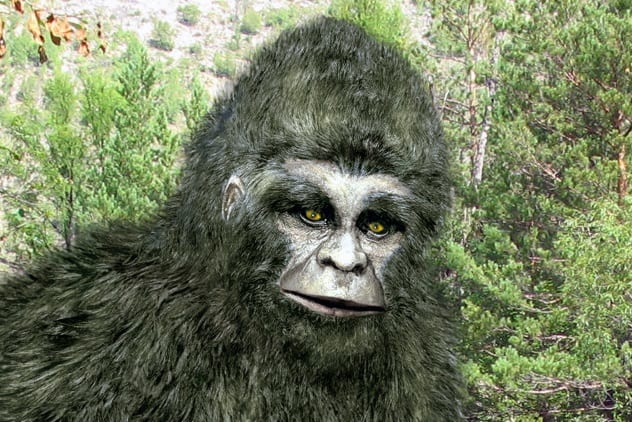
In 1954, mountaineer Charles Stoner was performing interviews concerning the Yeti and other matters in several of the Himalayan villages he was visiting. Stoner was interested in the folklore and the beliefs regarding the creature but ran into a story that he wasn’t quite prepared for.
In the village of Tamyeh, Stoner found himself talking to a man named Lakhpa Tensing, who explained that, three years earlier, he had a chance encounter with a Yeti. It was in the month of March, and Lahkpa had taken his yak herd out to graze where the snow had melted. When it was time to go, one yak had wandered off, so Lahkpa climbed to a rocky area nearby to look for the stray animal. He heard a strange yelping noise that sounded like a puppy, so he went to investigate . . . and found the guts of a local rodent strewn on the ground, still fresh.
Thirty paces away, sitting on a rock with its back to him, was an upright creature about the size of a 12-year-old boy. It was covered with reddish-brown hair and had a noticeably pointed head. Once Lahkpa realized that he was looking at a Yeti, he crept back away as carefully as possible, not wanting to disturb the creature in any way.[7]
4 Word From Russia
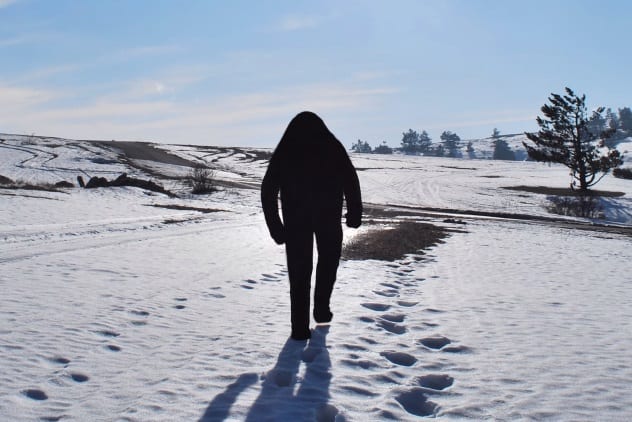
In January 1958, Dr. Alexander Pronin, a hydrologist from Russia’s Leningrad State University (now the Saint Petersburg State University), was with a group in the Pamir Mountains. One day, he was exploring a bit when he saw what he took to be a bear on a cliff top, but when it stood up, it was clearly not a bear.
The man-like figure was covered with reddish-gray hair and had stooping shoulders. He watched it for five minutes as the strange creature moved about the cliff top doing something, before it finally turned and left his field of view.
Three days later, he saw the same figure in the same place . . . and decided that it was time to admit that what he saw was real.[8]
3 Another Picky Eater
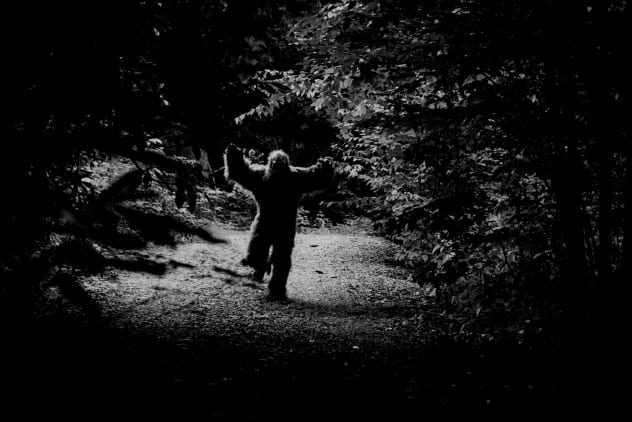
In 1958, an expedition was sent to the Himalayas specifically to look for evidence of the Yeti. Naturalist Gerald Russell, who had been on an earlier 1954 expedition, was acting as the deputy leader for this outing.
Toward the end of April, Russell and his Sherpa guide and interpreter, Da Temba, were in the area of Choyang Khola and were taking turns with other party members spending the night in a camouflaged observation post, keeping an eye out for unusual activity. A local man told them that he’d seen a small Yeti which would visit a nearby creek nightly looking for frogs to eat, so they investigated. Russell didn’t see it, but Da Temba was in the right place at the right time.
Around midnight, a Yeti about 137 centimeters tall (4’6″) approached the creek where Da Temba was watching. It was assumed that the animal was a young Yeti, as it was physically shorter compared to most reports. As the creature searched for frogs, Da Temba shined a flashlight into the Yeti’s face. It responded by running at the men, who bravely fled. In the morning, Russell investigated and found not only Da Temba and the local man’s prints but those of a small biped, which resembled the appearance of Yeti prints seen in other areas of the Himalayas.[9]
2 Patience Prevails
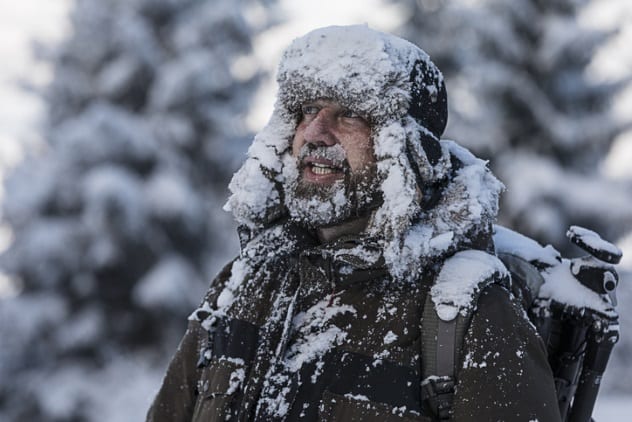
In 1970 Don Whillans was part of a group of mountaineers who set up camp near Machapuchare. One night, one of the Sherpas with the group, looking past Whillans, said matter-of-factly, “Yeti coming.” Whillans turned around just in time to see a shadowy figure disappear behind a ridge. Checking the next day, Whillans and another of the mountaineers discovered strange tracks by the ridge near where Whillans had seen the figure the night previously. The other mountaineer dismissed them as bear tracks. Whillans wasn’t so sure.
That night, the moon was bright enough to read by. Whillans’ tent was positioned so that he could poke his head out and see the slope and ridge where the figure had been the previous night. Despite the bitter cold, Whillans kept peeking out from time to time to see if any animals were in the area. His patience paid off later in the evening when, fairly suddenly, a figure sprang out from the shadows on the hillside and quickly bounded along on all fours straight for the cliff face. The creature was big and powerful-looking, and Whillans felt it was either an ape or a very similar animal. He watched for a while, but nothing more happened that night.
The next morning, Whillans and two Sherpas went to investigate and found tracks in the snow corresponding to what he’d seen the night before . . . but both Sherpas pretended there were no tracks at all! Perhaps they were afraid that Whillans would go looking for the source, unaware that he’d already seen it.[10]
1 Surprise On The Slope
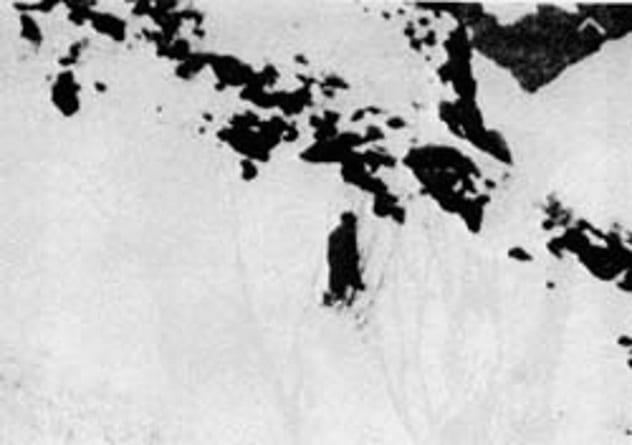
In March 1986, Anthony Wooldridge was doing a run/climb through the Alaknanda Valley in the Himalayas for charity purposes. Wooldridge was reasonably unfamiliar with Yeti lore at the time, so when he reached a remote wooded area where other humans shouldn’t have been since the previous summer, he was very surprised to see a distinct trail that traveled through the snow from bush to bush. He took two pictures and then set off on his run again, hoping to find a way through the snow to Hemkund by the next day, which was going to be tough.
About an hour later, Wooldridge’s path crossed a steep slope, and there had been an avalanche ahead of his arrival, so he stopped to survey the area, looking for the safest way to cross. As he was looking, he noticed an unnatural groove in the snow slope, as if a large rock had slid down for a short distance, and there were more footprints leading away from the bottom of the groove. He followed the tracks with his eyes to a spindly shrub . . . and whipped out his camera to quickly take several shots before moving to a spot that was as close as he could safely get to look more.
There was something just beyond the shrub, something about 183 centimeters tall (6′) and standing up. Its legs were apart, and the creature was apparently looking down the slope, unaware of Wooldridge, who was looking at the animal from its right. It was covered in dark hair, and its head was large and squarish. Wooldridge moved down the slope a little to get a different angle. When he looked again, he had the distinct impression that the creature was now watching him as well. As the weather deteriorated, Wooldridge realized that he wasn’t going to reach Hemkund that day, and suddenly unwilling to just camp out, he headed back to the last village he had stopped at before night fell.[11]
+ Don’t Forget The Prints
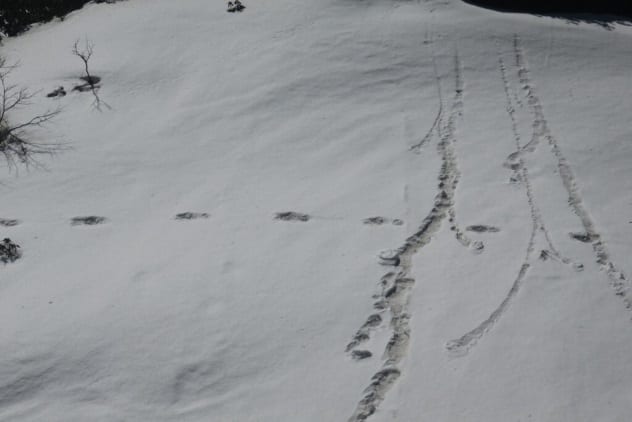
On April 29, 2019, the Indian Army sent out the following tweet, along with three photos of strange prints in the snows of Makalu in the Himalayas:
For the first time, an #IndianArmy Moutaineering Expedition Team has sited Mysterious Footprints of mythical beast ‘Yeti’ measuring 32×15 inches close to Makalu Base Camp on 09 April 2019. This elusive snowman has only been sighted at Makalu-Barun National Park in the past.[12]
As mentioned at the beginning, almost everyone immediately mocked the tweet, but stop and consider for a moment. In the pictures, the large prints are separated by a distance equal to about one and a half prints in length. So if, as the Indian Army reported, the individual prints are 81 centimeters (32 in) long each, that would imply the visible distance between the prints is around 122 centimeters (48 in) apart— that’s a lot of undisturbed snow between each print! No one in skis or snowshoes could pull that off, and that would be difficult even for the largest bears in the region.
So what did actually make the prints?
Garth Haslam has been digging into strange topics for over 30 years and posts his research on varying anomalies, curiosities, mysteries, and legends at his website Anomalies—the Strange & Unexplained. Check it out at http://anomalyinfo.com or on Facebook at https://www.facebook.com/anomalies.news.
Read about more bizarre reports of ape-men on 10 Bigfoot-Type Cryptids You May Not Know About and Top 20 Bigfoot Sightings.





